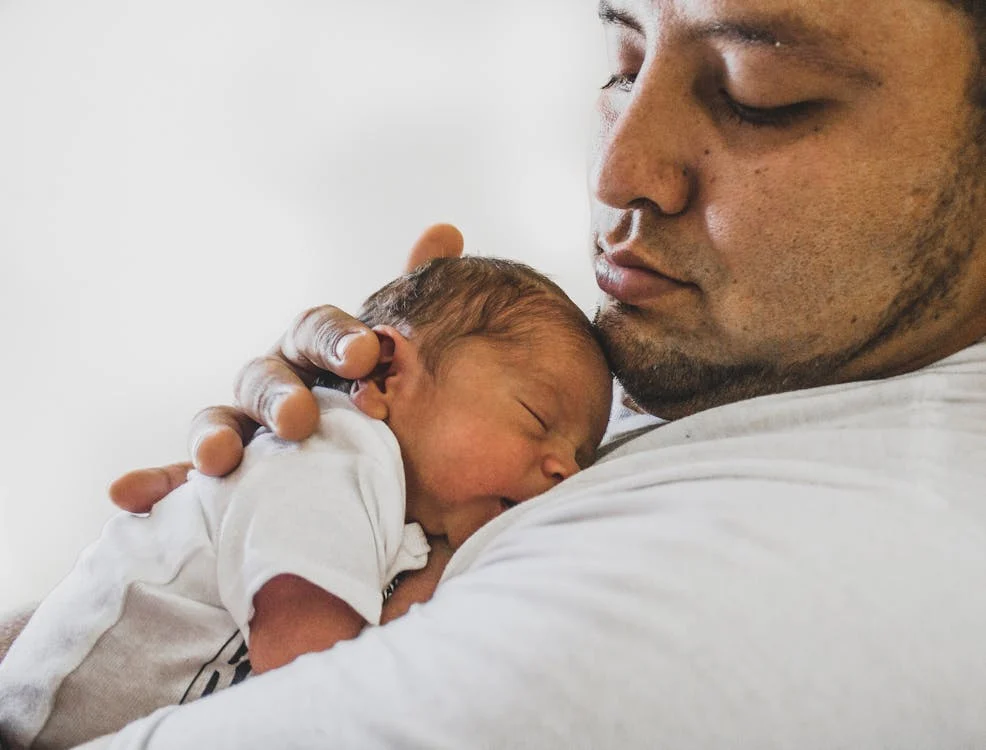Are you ready to start learning about parent-infant bonding? Let’s get started! Attachment is the unique emotional relationship that parents share with their babies. As their primary caretaker, parents and their babies grow strong bonds. Attachment represents an essential factor in how a baby’s brain develops emotionally and physically.
A secure attachment results from the wordless exchange of emotions when you spend time with your baby. Your infant needs a calm environment for the development of its nervous system. Your attachment to your baby provides the foundation for learning. It also makes them aware and develop trust.
Do you wish to create a strong attachment with your newborn baby? This guide provides some parenting tips. You will learn how to respond to your baby’s cues, which ensures that they can enjoy a good foundation for life.
Table of Contents
The Importance of Parent-Infant Bonding

Bonding with newborns is a multifaceted process. It is significant for the immediate and long-term well-being of your infant. This section explains some of the importance of bonding.
- Emotional development
Forming a strong bond with a newborn is crucial for their emotional development. Infants rely heavily on their caregivers for emotional cues and security. Positive bonding experiences may include responsive caregiving and comforting interactions. These gestures create a foundation of emotional trust. Your newborn needs this early emotional connection. After all, it sets the stage for the infant’s ability to form healthy relationships.
- Cognitive stimulation
Bonding experiences provide rich cognitive stimulation for newborns. Engage in simple activities like talking to the baby and making eye contact. These interactions contribute to the development of neural pathways in the brain. This early cognitive stimulation promotes future learning and problem-solving skills.
- Secure Attachment is Established
As explained earlier, a secure attachment results from spending time with your newborn. Establishing a secure attachment with a newborn is one of the primary outcomes of bonding. Secure attachment is characterized by the infant’s confidence that their needs will be met. This contributes to a sense of security and trust. An attachment style serves as a fundamental building block for the child’s social and emotional development. This influences their relationships and interactions with others.
- Physical Well-being
Physical touch and closeness during bonding promote the overall physical well-being of the newborn. Skin-to-skin contact helps in regulating the baby’s temperature and breathing. Bonding between parents and their infants also releases oxytocin. This love hormone has physical and emotional benefits. It promotes a sense of calm.
- Communication and Language Development
Bonding is also essential for early communication and language development. Caregivers naturally engage in verbal interactions with their infants. This introduces them to the rhythm and patterns of language. The exchange of sounds and gestures during bonding moments hones the baby’s communication skills. This boosts language acquisition and social interaction.
Attachment Techniques Between Infants and Parents

Attachment between infants and parents is a crucial aspect of early development. As mentioned earlier, it shapes the child’s emotional well-being and social skills. There are various attachment techniques that foster secure bond. This creates a strong foundation for a child’s overall growth. Some attachment techniques between infants and parents are introduced as follows:
1. Skin-to-Skin Contact
Skin-to-skin contact is a powerful attachment technique. This is especially true in the early days of a newborn’s life. Ensure that you hold the baby close. Their skin should be pressed against the parents. Doing so promotes bonding and trust. This intimate connection also helps to establish a sense of security and comfort.
2. Provide Your Infant with Responsive Caregiving
Responsiveness to your baby’s cues is essential for building a secure attachment. You should promptly attend to a crying infant. This offers comfort and meets their needs to create a sense of trust. Your infants learn that your presence is a reliable source of support. This enhances the emotional connection between parent and child.
3. Make Eye contact and facial expressions.
Ensure that you make eye contact and share facial expressions with your newborn. This is a wordless exchange of emotions and forms a vital part of attachment. Babies are highly responsive to visual cues. The reciprocal exchange of gazes helps build a solid emotional connection. Smile and make playful expressions during interactions. Doing this contributes to a positive and bonding experience.
4. Cuddle them and offer a gentle touch.
You should make physical touch like cuddling and gentle stroking. This promotes a sense of security and comfort for the infant. Touch is a powerful means of communication. It conveys a sense of warmth and affection. Regular physical closeness enhances the emotional bond between you and your child. This offers them a feeling of safety and trust.
5. Interactive play is important.
Interactive play is a dynamic way to build attachment. You can engage in activities like peek-a-boo and tickling. These simple games allow parents to engage with their infants in a joyful and responsive manner. These activities ensure that your infants enjoy your presence. As they do, you boost the development of the parent-child bond.
6. Promote routine and predictability.
Infants and toddlers need predictability. You promote this by offering a sense of predictability for infants. Consistent daily patterns create a secure environment. These may include feeding and bedtime routines. The reliance of infants on routines helps in promoting a feeling of attachment and safety.
7. Talk and sing to them.
Verbal communication is a powerful tool for attachment. Talk to your baby and sing lullabies. This helps them develop language development and strengthens the parent-infant bond. Your voice features certain rhythmic and melodic qualities. These have soothing effects that create positive associations with communication.
Establishing that Connection

Your newborns are in constant need of a safe and calm environment. This can be achieved by building bonds with them. The various attachment techniques mentioned above can help you boost a solid emotional bond with your infants. Your support and presence can help you establish a secure attachment with your newborn. The attachment techniques require consistency. Consistent responsiveness and positive interactions are ways to promote secure attachment. These techniques can help with parent-infant bonding, you so desperately want.


